9 Types of Ticks in Mississippi (With Pictures)
-

- Last updated:
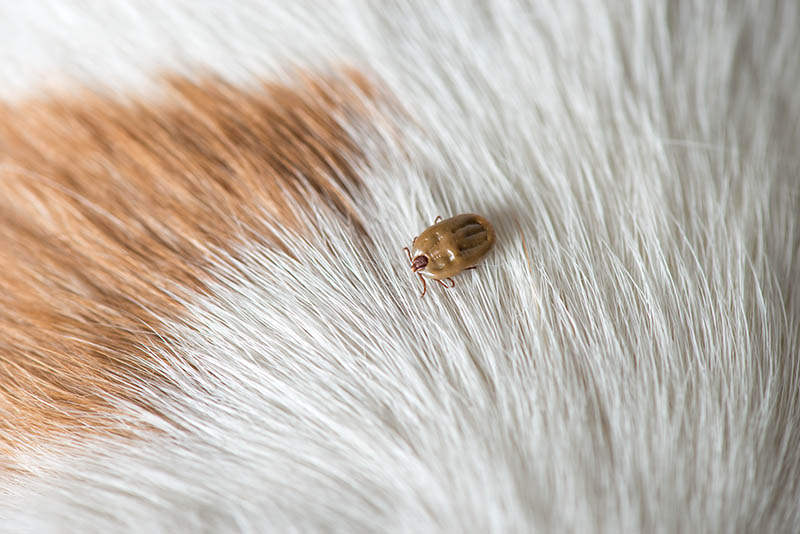
Ticks love warm weather, so it’s no surprise that there is a whole trove of tick species in Mississippi. But just how many tick species are there, when are they active, and which ones do you need to worry about the most?
We answer all those questions and more for you here, so you know exactly what to expect while in the Magnolia State. We also go over what to do if you do find a tick on yourself and when to seek medical treatment, along with basic tips to keep ticks away in the first place.

The 9 Types of Ticks in Mississippi
1. Lone Star Tick
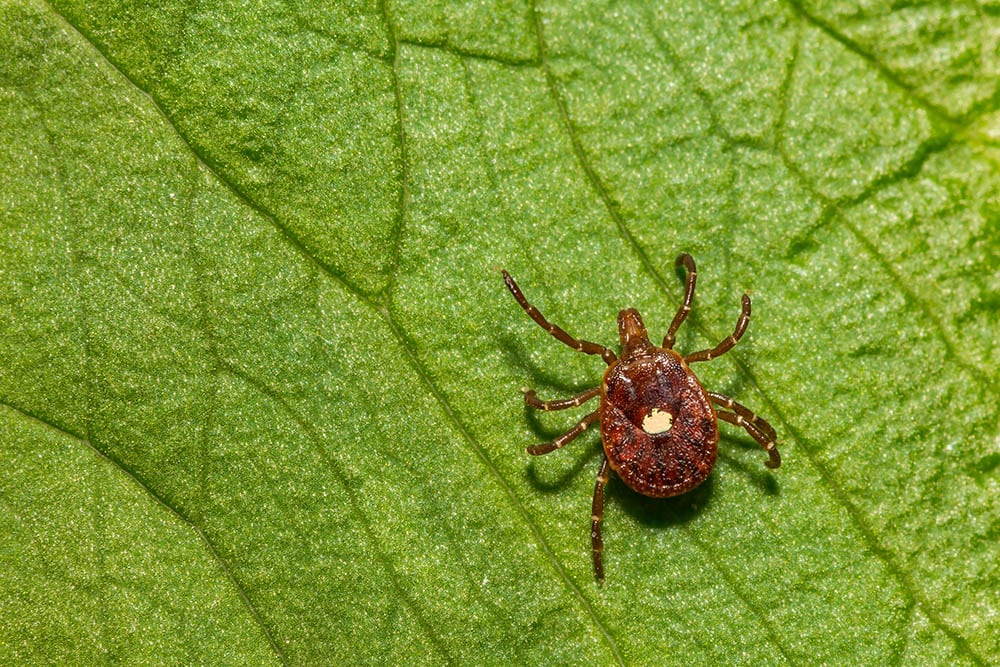
| Scientific Name: | Amblyomma americanum |
| Common Diseases: | Ehrlichiosis, tularemia, heartland virus, STARI, and alpha-gel syndrome |
| Most Active During: | Spring to fall |
While the lone star tick doesn’t spread Lyme disease, that’s about the only disease that this tick doesn’t spread. It’s an extremely common tick in the south, and Mississippi is no exception.
They have a single white spot on their back that makes them easy to tell apart from other ticks. They’re most active from spring to fall, so you should take extra precautions throughout this time to avoid them.
2. Gulf Coast Tick
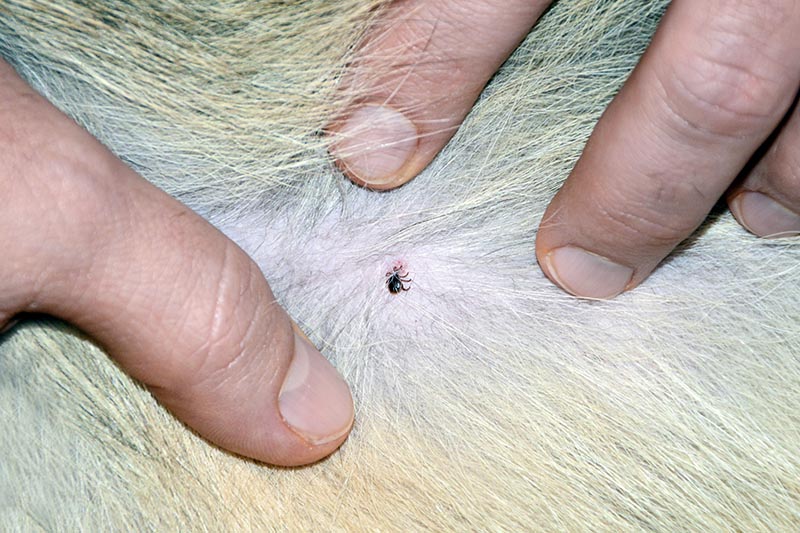
| Scientific Name: | Amblyomma maculatum |
| Common Diseases: | Rocky Mountain spotted fever |
| Most Active During: | Spring to fall |
The Gulf Coast tick isn’t all over the country, as they thrive in an area from the Gulf Coast to about 100 to 150 miles inland, though with enough access to water and the right conditions, they can migrate farther. Mississippi meets that criterion.
The problems has worsened over the decades because humans travel more and can carry these small insects around and drop them off in new locations.
3. American Dog Tick
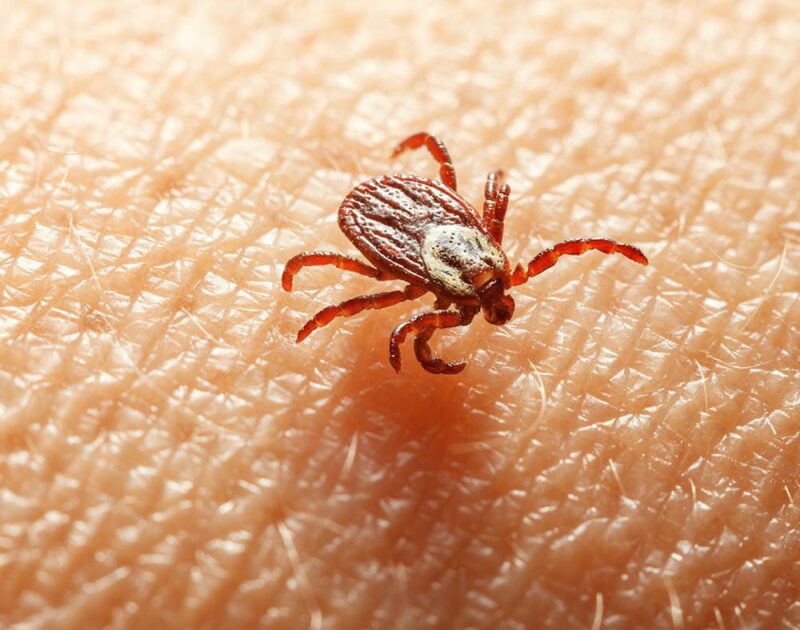
| Scientific Name: | Dermacentor variabilis |
| Common Diseases: | Tularemia and Rocky Mountain spotted fever |
| Most Active During: | Spring and summer |
The American dog tick is one of the most prevalent types of ticks in the United States, and in the warm weather in Mississippi, they can really thrive. They can spread both tularemia and Rocky Mountain spotted fever, though most of the time, they don’t go after humans.
As the name implies, they tend to go after dogs and other smaller mammals, but it’s not completely unheard of for them to bite a human if the opportunity arises. If you live in Mississippi and have a dog, you should regularly check them for these ticks.
4. Black-Legged Deer Tick
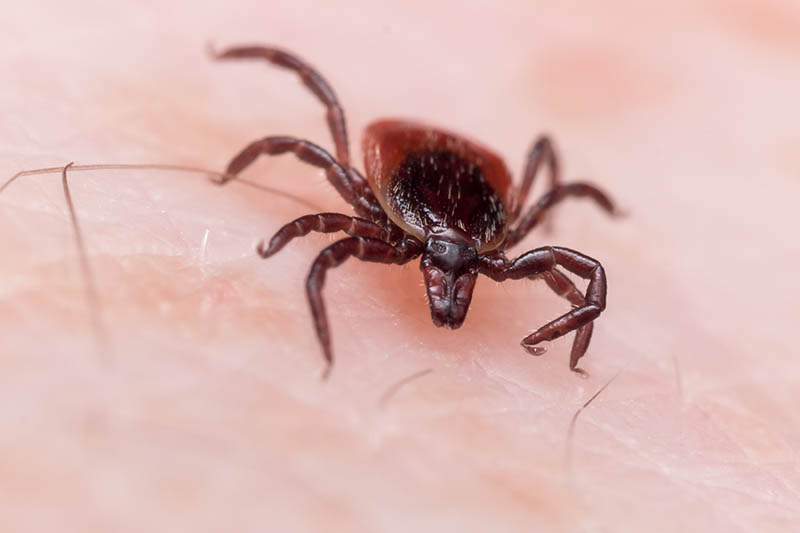
| Scientific Name: | Ixodes scapularis |
| Common Diseases: | Lyme disease, anaplasmosis, babesiosis, and Powassan virus |
| Most Active During: | End of May through June |
The black-legged deer tick is one of the most infamous ticks out there because they carry Lyme disease. They’re also highly aggressive compared to other types of ticks, and you’ll often find them in wooded areas.
The good news is that while they are active throughout most of the warmer months, they only reach peak activity levels for a short time. Around the end of May through June, you should take extra precautions to try to avoid these ticks.
5. Spinose Ear Tick
| Scientific Name: | Otobius megnini |
| Common Diseases: | None |
| Most Active During: | Year-round |
Few ticks are as nightmare inducing as the spinose ear tick. While these ticks rarely bite humans, they will occasionally feed on the inside of the ear when in the nymph stage.
Most of the time, these ticks feed on cattle and other large animals, though. They can feed on a single horse for about 200 days! That means you could encounter these ticks on animals throughout most of the year.
6. Brown Dog Tick

| Scientific Name: | Rhipicephalus sanguineus |
| Common Diseases: | Rocky Mountain spotted fever |
| Most Active During: | Spring to fall |
The brown dog tick is a type of tick that primarily goes after smaller mammals, like dogs. They rarely bite humans but it’s not unheard of. They can spread Rocky Mountain spotted fever, so if you do find a brown dog tick on you, you should take it seriously.
Also, keep inspecting your dogs from spring to fall to ensure that they don’t have any of these small ticks hiding in their fur.
7. Gopher Tortoise Tick
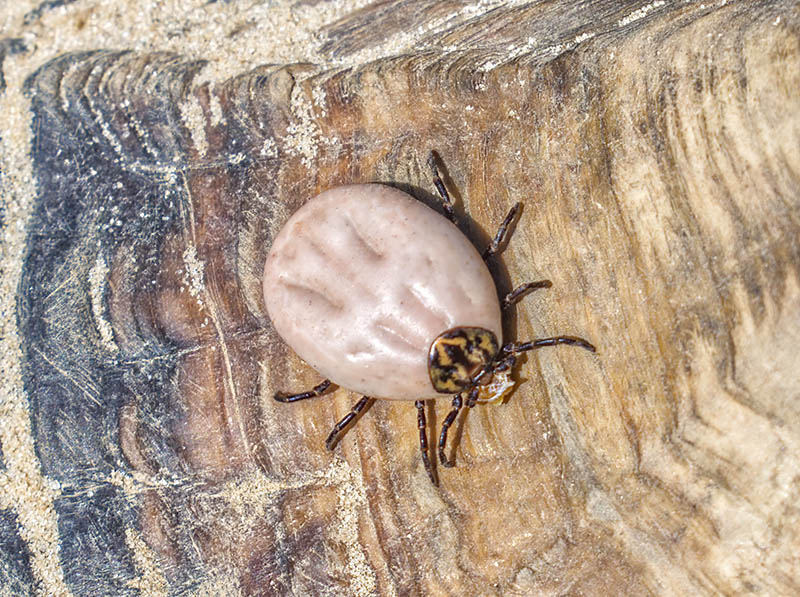
| Scientific Name: | Amblyomma tuberculatum |
| Common Diseases: | None |
| Most Active During: | Year-round |
The gopher tortoise tick is the largest tick species in Mississippi, but fortunately, they don’t try to feed on humans often. Instead, their preferred prey is the gopher tortoise, which is how they get their name.
These ticks can reach the size of a marble, which is significantly larger than most other tick species. Currently, there are no known diseases that these ticks will pass onto humans in the rare event that one bites you.
8. Winter Tick
| Scientific Name: | Dermacentor albipictus |
| Common Diseases: | None |
| Most Active During: | Fall and winter |
The winter tick gets their name from the fact that they’re one of the few ticks that you see more of as the weather cools down. They start to emerge around fall and thrive throughout the winter.
But the good news is that they rarely go after people, and even if they do bite you, there are no known diseases that they pass to humans.
9. Rabbit Tick
| Scientific Name: | Haemaphysalis leporispalustris |
| Common Diseases: | Rocky Mountain spotted fever and tularemia |
| Most Active During: | Spring through summer |
The rabbit tick is one of the country’s most common types of ticks, but since they almost exclusively stay on smaller animals, like rabbits, most people don’t think about them too much.
But while it’s unlikely that they’ll bite you, it’s not impossible. If you find a rabbit tick on you, keep an eye out for a rash or a fever, since they can spread both Rocky Mountain spotted fever and tularemia.

Removing Ticks
There are many misconceptions out there about what you should do if you find a tick on you or someone else. This is what the CDC recommends.
Start by getting a fine-tipped pair of tweezers and grabbing the tick as close to the head as possible. Once you have a good grip on the tick, simply pull straight up with firm and even pressure. The goal is to pull the tick out without detaching any of their mouth parts.
If any of the mouth parts do come off, you need to remove them. Once you have the tick and all of its parts off, wash the area with soap and water to clean it out.

When to See a Doctor for a Tick Bite
Since ticks can carry diseases, it’s important that you self-monitor the affected area for several weeks after removing a tick. If you notice a rash develop or if you get a fever, it’s time to see a doctor for testing and treatment.
Tell the doctor about the type of tick that bit you and when symptoms started. But don’t rush to the doctor before you notice any symptoms. There’s often nothing that they can test for right after you remove the tick.
Also, not every tick carries disease, so there’s a decent chance that you don’t have anything to worry about.
Tips for Avoiding Ticks
While you should know what to do if you get a tick bite, there’s no doubt that the best thing that you can do is avoid the ticks in the first place. Don’t go into areas where ticks are common. This includes areas that are heavily wooded and have overgrown brush.
But if you do need or want to head into these areas, we recommend covering up as much as possible and tucking your pants into your shoes. This gives ticks fewer access points to your skin and can help keep them off you.
Of course, in Mississippi, it can get quite hot during the summer months, so your best bet might be to invest in a high-quality bug and insect deterrent. While this method isn’t completely foolproof, it helps quite a bit and makes it far less likely that a tick will bite you.

Conclusion
Now that you know more about the common tick species in Mississippi, all that’s left is for you to take the time to check for them and remove them if you do find any. While not every tick carries disease, it’s best to treat them all like they do.
This will keep you and your loved ones safe just in case the tick does have a disease or otherwise might make someone sick.
Featured Image Credit: antpkr, Shutterstock
Contents
